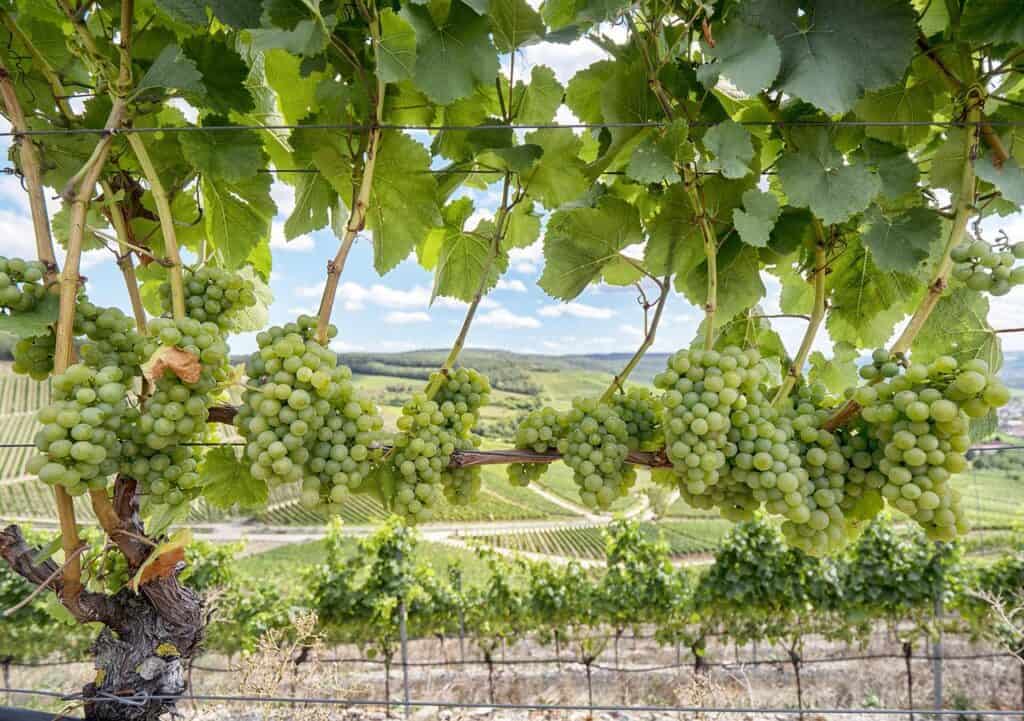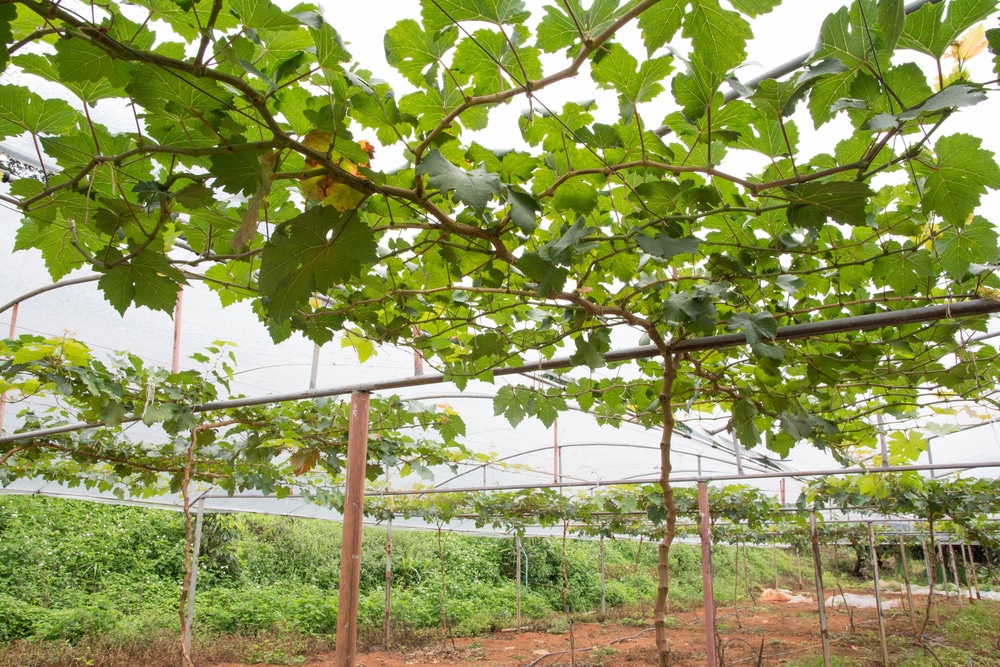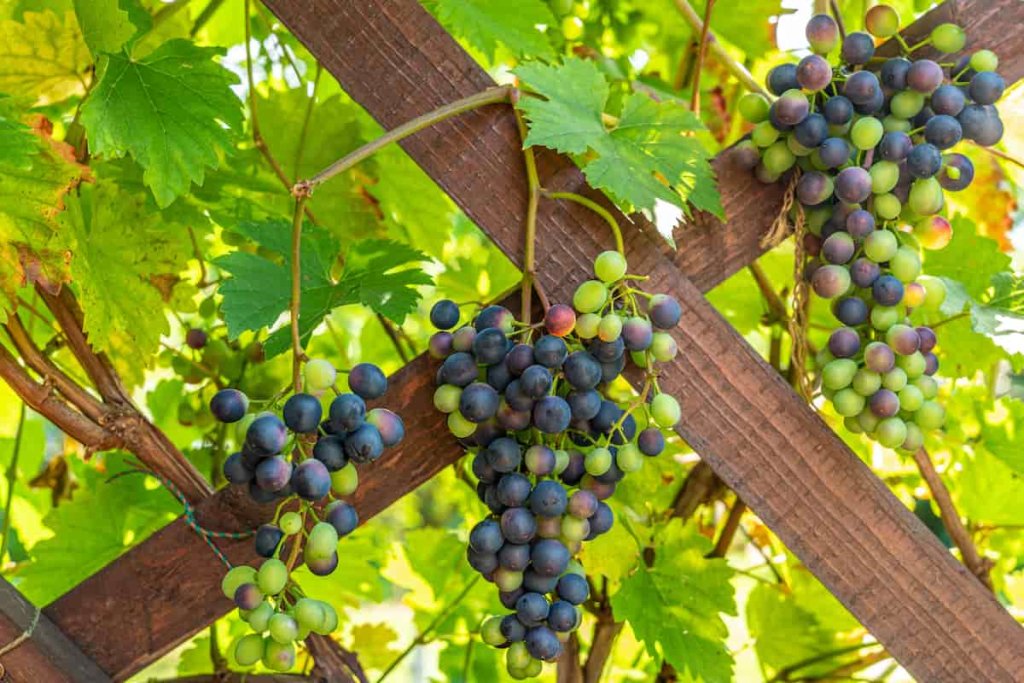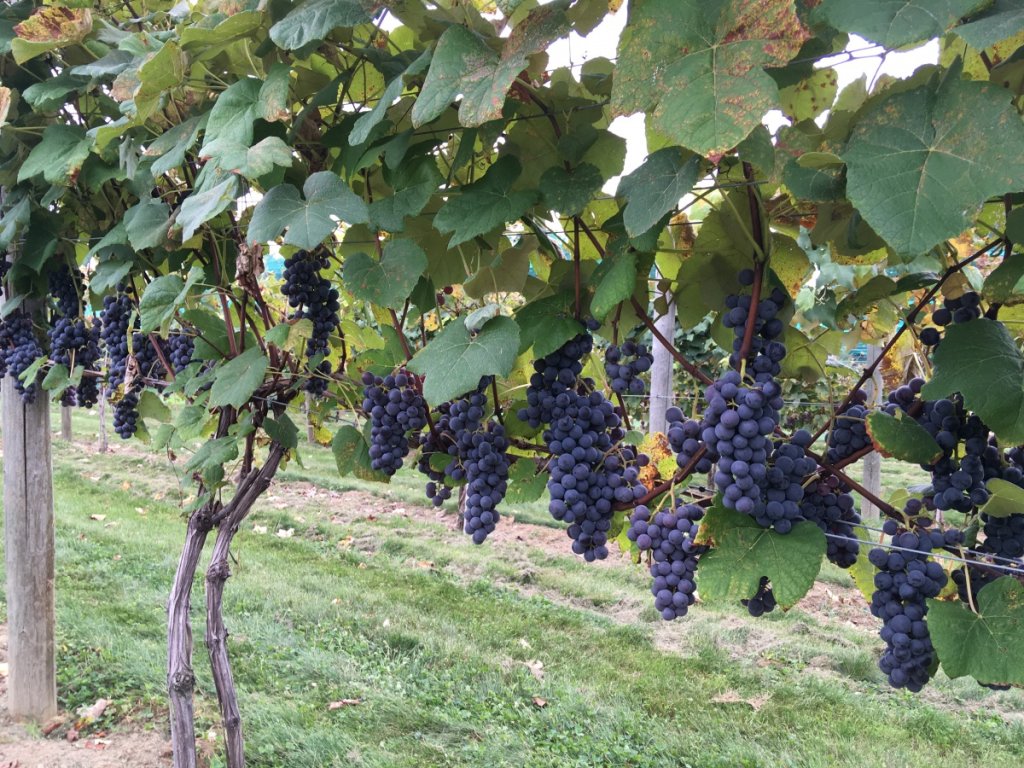Grape vines are an amazing fruit, without any doubt. But its height matters, too. And how tall the trellis should be. It’s an important question if you’re planning to grow grapes. The trellis is like a special ladder for grapevines. It helps them grow in the right way.
But how high should this ladder be? Grapes are like little climbers. They reach out and grab onto things. It’s how they grow up and get sunlight. But they need some help to do it neatly. So, let’s begin by knowing more about vineyards.
By the end, you’ll know just how tall your grape trellis needs to be. Let’s get started.
1. Caring for Grapes on a Trellis

Pruning, watering, and protecting these vines are essential tasks for ensuring their health and productivity. Pruning involves strategically trimming away excess growth, allowing the vine to channel its energy into producing high-quality fruit. Adequate watering is crucial, particularly during dry spells, as grapes rely on consistent moisture for optimal growth.
Additionally, safeguarding the vines from pests and diseases is important. This can be achieved through regular inspections and applying natural remedies or organic insecticides. Know about caring with grape vine trellis ideas.
2. Supports for Growing Grapes

Selecting a suitable support structure is an important decision in grape cultivation. The trellis is the backbone of the entire vineyard, providing the necessary framework for the vines to flourish. Materials such as treated wood or durable metal are popular choices, known for their longevity. The selected support should be capable of withstanding the weight of mature grapevines laden with fruit, ensuring it remains steadfast in its role. Use gardening gloves to protect your hands while tending to your grape vines.
3. Growing Grapes Up
Training grapevines to grow vertically is a strategic approach that optimizes space, encourages proper air circulation, and minimizes disease susceptibility. This upward growth pattern allows the vines to reach for sunlight, a crucial element in photosynthesis and fruit development. By training the grapevines to grow upward, gardeners harness the natural inclination of the plants to climb and reach for support. This method not only improves the look of the vineyard but also creates a well-organized and manageable growing environment.
4. Ideas for Grape Supports
When it comes to choosing a support structure for grapevines, gardeners are presented with a delightful array of options, each with its unique beauty. Shorter supports, such as low trellises or arbors, offer a manageable and intimate setting for grape cultivation. These structures allow for easy access, simplifying tasks like pruning, training, and harvesting. Additionally, they make an inviting atmosphere to the garden, creating a space where one can immerse themselves in the beauty of the vines. You should have pruning shears, which are essential for trimming and maintaining healthy grape vines.
5. Training Your Grapevines
Training grapevines is similar to sculpting a living work of art. It involves guiding the growth of the vines to achieve the desired form and structure. Proper training ensures that the grapevines grow in a way that maximizes sunlight exposure, air circulation, and accessibility for maintenance. The process begins with gently tying the young vines to the trellis, providing them with initial support and guidance. This encourages them to grow in an organized and upright manner, preventing wild, attention-seeking growth patterns.
6. Best Height for Grape Trellis

Determining the optimal height for a grapevine trellis is a crucial consideration in vineyard planning. The trellis should provide enough vertical space for the grapevines, allowing them to reach for sunlight and achieve photosynthesis. A trellis that is too short may limit the upward growth of the vines, potentially leading to overcrowding and reduced air circulation. Conversely, an excessively tall trellis may pose challenges in terms of maintenance and harvesting. Get a sunscreen net to protect grape leaves from sunburn during hot climates.
7. How Grapes Climb

The climbing nature of grapevines is a marvel of botanical adaptation. These vines possess specialized structures called tendrils that reach out and grasp onto available supports. This natural tendency allows grapevines to climb, seeking the perfect position for sunlight exposure and air circulation. As they grow, the tendrils become increasingly strong, forming a secure connection between the vine and its chosen support.
8. Why Grapes Need Support
The benefits of providing support for grapevines work as aesthetics, too. A well-supported vineyard exhibits a tidy and organized appearance, where each vine occupies its designated space. This prevents the vines from going out, leading to tangled growth patterns and potential disease. Additionally, a supported vineyard allows for efficient air circulation, reducing the risk of fungal infections and other diseases that thrive in crowded conditions.
9. Steps to Grow Grapes Up
Growing grapes on a trellis involves a systematic approach that begins with careful planning. Gardeners should assess the available space, select the appropriate trellis design, and consider factors such as sunlight exposure and airflow. Once the plan is in place, installing the trellis is the next crucial step. After installation, ongoing care and maintenance are essential.
Conclusion
Now that we have come to this point, we know that when it comes to grape trellises, the right height matters a lot. A grape trellis should be tall enough to let the grapevines reach for the sun and the breeze but not so tall that it becomes a hassle to take care of them. The trellis should support the grapes and keep them neat, like a well-organized garden. It also helps protect them from pests that might try to munch on the tasty grapes.
So, whether you choose a short and sweet trellis or a tall and proud one, make sure it suits your grape-growing goals. Grape trellises are a strong reason behind a successful grape garden.
They help your grapes grow happily and healthily, and that’s a win-win for any grape lover.

